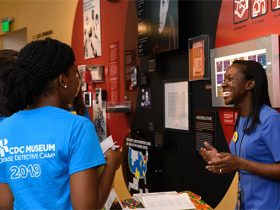Hip Flexor and Groin Pressure
- Hip flexor and groin (adductor) strains are frequent accidents in athletes, particularly these in sports activities that contain kicking, chopping, and sprinting, reminiscent of soccer, soccer, and ice hockey.
- •Amongst soccer gamers, groin accidents account for 8–18% of all accidents.
- •Plenty of muscle mass are concerned in flexion of the hip, together with the iliopsoas, rectus femoris, sartorius, tensor fasciae latae, pectineus, and the adductor muscle mass. The iliopsoas and rectus femoris muscle mass, that are innervated by the femoral nerve (L2-L4), are the most important hip flexors which can be mostly concerned in accidents
- The adductor muscle group is made up of the adductor longus, magnus, and brevis, together with the gracilis, obturator externus, and pectineus. All of the adductor muscle mass are innervated by the obturator nerve (L2-L4) besides the pectineus (femoral nerve, L2-L4) and the adductor magnus (each obturator and tibial nerve [L2-S3]).
- •Prior adductor or hip flexor pressure, decreased power in these muscle teams, and better degree of play have been related to an elevated threat of adductor and hip flexor accidents.
- •Returning athletes to play earlier than they’ll carry out pain-free, sport-specific actions can result in extended restoration or continual damage.
Historical past
- •Ache localized to the proximal anterior, center anterior, or medial thigh
- •Could also be an insidious onset with progressive ache or a sudden, painful occasion, particularly after a sudden change in path or sudden enhance in acceleration, kicking, or different forceful eccentric contraction of the hip flexor or adductor muscle mass. Ache after hyperextension of the hip may be reported in hip flexor accidents.
- •In an acute damage, the affected person generally stories “ripping” or “stabbing” ache within the groin or the medial thigh that’s intensified with passive abduction (adductor pressure) or passive hip extension (hip flexor pressure). This ache is changed by an intense uninteresting ache.
- •In a continual damage, the ache is commonly described as a diffuse uninteresting ache that could be felt deep within the groin (iliopsoas pressure), radiate distally alongside the anterior facet of the thigh (rectus femoris pressure), or radiate distally alongside the medial facet of the thigh (adductor pressure).
- •In sufferers with ache unrelated to a selected damage or repetitive train, genitourinary, gynecologic, and gastrointestinal signs that recommend a nonmusculoskeletal etiology must also be explored.
Bodily Examination
- •An in depth and thorough examination, together with an understanding of the anatomy, will assist to differentiate hip flexor and groin (adductor) strains from different causes of groin ache
Differential Analysis of Groin Ache
| Situation | Differentiating Options | |
|---|---|---|
| Groin (adductor) pressure | Painful resisted hip adduction and tenderness alongside the adductor muscle group. | |
| Hip flexor (iliopsoas or rectus femoris) pressure | Painful resisted hip flexion and ache on hip flexor stretching. Might have tenderness close to the insertion of the iliopsoas on the femur or alongside the size of the rectus femoris. | |
| Osteitis pubis | Palpable tenderness on the pubic symphysis; may see lack of rotation of 1 or each hips, constructive pubic spring take a look at, constructive lateral compression take a look at. Radiographs, magnetic resonance imaging, and/or bone scan will help to find out the prognosis. | |
| Athletic pubalgia | Beforehand known as sports activities hernia, groin disruption. Suspected to happen because of disruption of the rectus abdominus insertion on the pubic bone and a weakened posterior inguinal wall. Ache positioned within the area of the inguinal canal, pubic tubercle, or at or close to the rectus insertion. No palpable inguinal hernia. Ache will increase with resistance testing of the belly muscle mass and Valsalva. | |
| Obturator neuropathy/nerve entrapment | Deep ache close to the adductor origin on the pubic rami that worsens with train and should radiate down medial thigh towards the knee. Spasm, weak point, and paresthesias of the adductors also can happen. Ache with hip abduction and exterior rotation and with resisted hip inner rotation (all inflicting nerve stretch). Electromyography or obturator nerve block can help the prognosis. Additionally think about ilioinguinal, genitofemoral, and iliohypogastric nerve entrapments. | |
| Pelvic avulsion fracture/apophysitis | Ache and tenderness on the anterosuperior iliac backbone, anteroinferior iliac backbone, pubic rami, or lesser trochanter after an acute damage. Extra doubtless in pediatric and adolescent sufferers. Plain radiographs can verify fracture. | |
| Stress fracture | Medial thigh or groin ache that worsens with train, relieved with relaxation. Related to repetitive overuse, endurance athletes. Mostly happens on the femoral neck or pubic ramus, resulting in obscure ache localization. Incapability to finish single-leg hop because of ache. MRI or bone scan can verify prognosis. | |
| Intra-articular hip sources of groin ache | Large differential that features femoroacetabular impingement, acetabular labral damage, hip osteoarthritis, hip avascular necrosis, slipped capital femoral epiphysis, Legg-Calvé-Perthes illness. Will usually see painful or restricted hip inner rotation, notably with FADIR take a look at (flexion, adduction, inner rotation). Plain radiographs and magnetic resonance imaging will be helpful for clarifying prognosis. | |
| Nonmusculoskeletal sources of groin ache | If historical past and examination don’t recommend one of many above etiologies, think about evaluating the affected person for the presence of gastrointestinal, genitourinary, or gynecologic situations. |
- Ecchymosis or swelling will be noticed on the proximal medial or anterior thigh or alongside the course of the adductor muscle mass.
- •Adductor strains
- •Palpable tenderness alongside the adductor muscle mass or close to their origin alongside the pubic bone
- •Ache and tightness with passive stretching of the adductor muscle mass with hip abduction
- •Ache with resisted hip adduction
- •Hip flexor strains
- •Involving the iliopsoas
- •Palpable tenderness simply medial to the anterosuperior iliac backbone (ASIS) within the femoral triangle or alongside the psoas muscle above the inguinal ligament
- •Involving the rectus femoris
- •Palpable tenderness will be discovered anyplace from its origin on the anteroinferior iliac backbone (AIIS) to extra distally alongside the anterior thigh
- •Ache with resisted hip flexion
- •Ache and tightness with passive stretching of the iliopsoas and rectus femoris with hip extension or a modified Thomas take a look at (which entails maximally flexing the contralateral hip whereas stretching the affected hip flexor)
- •Involving the iliopsoas
Imaging
- •Imaging is usually pointless if historical past and examination recommend a hip flexor or groin (adductor) pressure.
- •If bony tenderness is current on the origin of the adductor muscle mass (pubic rami), the origin of the rectus femoris (AIIS), or the insertion of the iliopsoas (lesser trochanter) after an acute onset of ache, plain radiographs will be helpful in ruling out an avulsion fracture.
- •In instances of diagnostic uncertainty or for accidents unresponsive to remedy, ultrasound and magnetic resonance imaging (MRI) are the modalities of alternative to substantiate damage to those muscle teams
- Ultrasound has a sensitivity of as much as 84% when in comparison with the gold normal of MRI for the detection of muscle strains.
- •Advantageous within the capability to make use of sonopalpation to dynamically reproduce a affected person’s ache with palpation of a sonographically irregular discovering
- •MRI can yield prognostic details about muscle strains and tears. Though there are not any research up to now involving particular prognosis for adductor or iliopsoas strains seen on MRI, tears involving bigger cross-sectional areas and tears positioned at particular areas (such because the central tendon of the rectus femoris) are usually related to extended restoration.
Further Assessments
- •None are required for hip flexor or adductor strains.
- •If the historical past or bodily examination suggests a nonmusculoskeletal supply of the affected person’s groin ache, further research could also be indicated.
Remedy
- •Remedy ideas are comparable for each hip flexor and adductor strains. Rehabilitation ought to comply with a stepwise development by means of the next phases:
- Section 1: Vary of movement and isometric workouts
- •Vary of movement workouts will be carried out a number of instances per day. Keep away from workouts that trigger reasonable to extreme ache (>5/10).
- •Isometric workouts ought to be carried out day by day, with rising resistance and rising period as tolerated.
- •This section must also embrace PRICE (Safety, Relative Relaxation [avoid painful activities, consider using crutches for a few days in acute strains], Ice, Compression, Elevation).
- •Brief programs of nonsteroidal antiinflammatory medication may also be given.
- •Modalities reminiscent of electrical stimulation and therapeutic massage will help to alleviate muscle spasm.
- •As soon as the affected person is ready to interact in regular actions of day by day dwelling with out ache and has no ache with vary of movement and isometric workouts, they’ll progress to the following section.
- •Section 2: Progressive strengthening
- •Eccentric and concentric workouts with regularly rising load whereas various repetitions to attain elevated power and neuromuscular coordination. Workout routines ought to happen 3 times every week with at the very least one relaxation day in between every session.
- •Cardio workouts will be launched however ought to keep away from chopping or aggressive adjustments in velocity.
- •As soon as the affected person can straight-line run and advance by means of the strengthening program with out ache, they’ll progress to the following section.
- •Different biomechanical abnormalities ought to be sought and corrected if discovered.
- •Section 3: Proprioception, dynamic sport-specific workouts, and return to play/exercise
- •Return to play/exercise objectives
- •Affected person has restored the overwhelming majority of his or her power in contrast with the contralateral facet.
- •Affected person has pain-free full vary of movement.
- •Affected person can carry out sport-specific workouts with out ache or alteration of mechanics.
- •Return to play/exercise objectives
When to Refer
- •Though the overwhelming majority of adductor and hip flexor accidents will be efficiently managed conservatively, refer sufferers with continual hip flexor or adductor strains that fail to reply after at the very least 6 months of conservative remedy.
- •Skilled orthopaedists or sports activities drugs physicians might have expertise in treating these situations with superior injections (prolotherapy, platelet-rich plasma [PRP], and many others.), dry needling, or acupuncture.
- •Uncommon indications for surgical referral embrace continual tendinopathy refractory to the aforementioned interventions, the place a tenotomy could also be thought-about, and a big bony avulsion on the tendon origin or insertion.
Prognosis
- •Many athletes with minor accidents advance quickly by means of their rehabilitation program and are in a position to return to sports activities in lower than 1 week. Extra vital accidents might take 4 to eight weeks for restoration and require cautious development by means of their rehabilitation program.
- •In continual accidents, rehabilitation might take anyplace from 2 to six months earlier than return to sports activities.
Troubleshooting
- •The affected person have to be ache free with sports-specific actions to return to sports activities to keep away from threat of reinjury or continual damage.
- •Using corticosteroid injections in hip flexor and adductor strains is controversial. Though corticosteroids are doubtless to enhance ache and irritation within the brief time period, there may be concern that steroids may weaken the tendon and predispose to continual or recurrent damage.
Affected person Directions
- •Counsel sufferers that these accidents reply effectively to conservative therapies and can profit from long-term upkeep of hip flexor and adductor power.
- •Observe doctor, bodily therapist, and/or athletic coach directions carefully with respect to the sort, amount, and timing of workouts and actions which can be acceptable for the stage of damage.
- •Counsel sufferers relating to signs that will recommend another prognosis or require quick analysis.
Concerns in Particular Populations
- •These caring for athletes (notably in sports activities involving kicking, chopping, and sprinting) will generally encounter this situation.
- •Remedy for athletes with hip flexor and adductor accidents requires a staff method and an understanding of the athlete’s apply and competitors schedule.
- •Hip flexor and groin strains are recurrent in as much as 50% of athletes, with highest charges of recurrence in ice hockey.
- •Research have proven blended outcomes relating to the efficacy of preseason and in-season train applications designed to stop groin ache in aggressive athletes.
Prompt Readings
- Bayer ML, Magnusson SP, Kjaer M: Early versus delayed rehabilitation after acute muscle damage. N Engl J Med 2017; 377: pp. 1300-1301.
- Eckard TG, Padua DA, Dompier TP, et al.: Epidemiology of hip flexor and hip adductor strains in nationwide collegiate athletic affiliation athletes, 2009/2010-2014/2015. Am J Sports activities Med 2017; 45: pp. 2713-2722.
- Hölmich P, Hölmich LR, Bjerg AM: Scientific examination of athletes with groin ache: an intraobserver and interobserver reliability examine. Br J Sports activities Med 2004; 38: pp. 446-451.
- Lee SC, Endo Y, Potter HG: Imaging of groin ache: magnetic resonance and ultrasound imaging options. Sports activities Well being 2017; 9: pp. 428-435.
- Morelli V, Weaver V: Groin accidents and groin ache in athletes: half 1. Prim Care 2005; 32: pp. 163-183.
- Morelli V, Weaver V: Groin accidents and groin ache in athletes: half 2. Prim Care 2005; 32: pp. 185-200.
- Serner A, Tol JL, Jomaah N, et al.: Analysis of acute groin accidents: a potential examine of 110 athletes. Am J Sports activities Med 2015; 43: pp. 1857-1864.
- Tyler TF, Silvers HJ, Gerhardt MB, Nicholas SJ: Groin accidents in sports activities drugs. Sports activities Well being 2010; 2: pp. 252-261.
- Weir A, Brukner P, Delahunt E, et al.: Doha settlement assembly on terminology and definitions in groin ache in athletes. Br J Sports activities Med 2015; 49: pp. 768-774.














